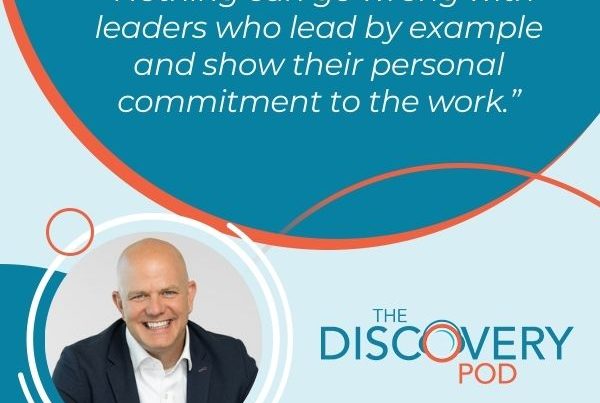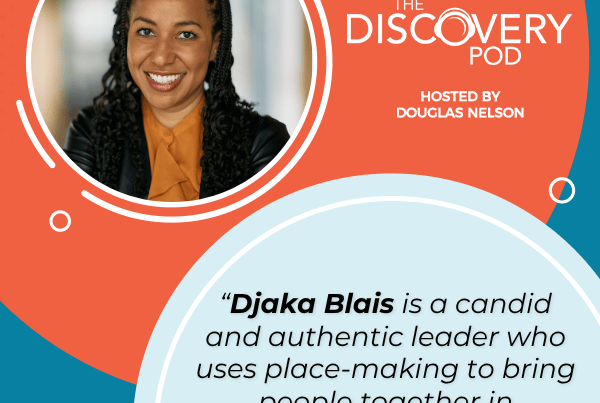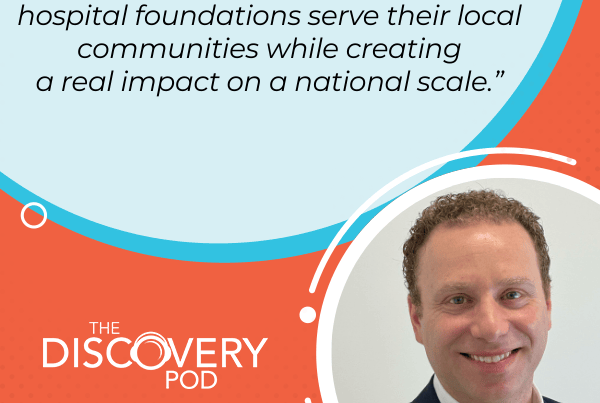
From turning potato starch waste into edible packaging to redirecting over a million pounds of imperfect produce, Enactus Canada proves that student-led innovation can transform communities. President & CEO Catherine Fowler shares how this national charity empowers almost 2,300 post-secondary students across 78 campuses to tackle pressing social, economic, and environmental challenges through entrepreneurial action. Discover how their programs spark 300+ new businesses a year, create jobs, and make a positive impact on over 30,000 lives. Catherine also offers insight into leading a young, ambitious team, navigating post-secondary funding cuts, and accelerating student projects through new seed funding initiatives. Plus, get a sneak peek into Team Canada’s game-changing projects heading to the Enactus World Cup in Bangkok.
—
Listen to the podcast here
Social Profit Leadership: Managing Young Teams, Board Dynamics, And Strategic Growth With Catherine Fowler, President & CEO, Enactus Canada
I’m joined by Catherine Fowler, President and CEO of Enactus Canada. Enactus Canada is a national organization that empowers post-secondary students to take entrepreneurial action for social good. Under Catherine’s leadership, Enactus is helping young people across the country build real-world skills, launch purpose-driven projects, and become the next generation of change makers.
She brings a strong belief in the power of youth, along with years of experience in leading organizations in education and the charitable sector. In this episode, Catherine talks about building a movement for change, both nationally and internationally, what it takes to lead effectively in a work environment with many generations playing important roles in the future and the daily operations of the organization, leading across the generational divides, and the great experience and insight coming from the philanthropic sector to organizational leadership. This is a great episode. I’m grateful for Catherine taking the time to be a part of the show. I hope that you enjoy it.
—
Welcome to the show, Catherine.
Thank you so much. I’m so happy to be here, and I appreciate this opportunity to speak with you.
Enactus Canada: Nurturing Social Entrepreneurs And Scaling Impact
I’m looking forward to our conversation. We’ve got a lot of great stuff to get through. At the top, I want to share the great work of Enactus Canada and what you and your colleagues do, along with your board and many supporters. Tell us more about the organization and who it is that you serve.
Enactus Canada is a national charity. We’re dedicated to inspiring and empowering post-secondary students to tackle real-world social, economic, and environmental challenges through entrepreneurial action. We challenge and support the students to identify issues in their community or in the world that they’re interested in and passionate about solving, creating a solution, and then turning that solution into a social enterprise, and running that business with their team on their campus.
Enactus Canada empowers post-secondary students to tackle real-world challenges through entrepreneurial action. Share on XIdentify a problem and then do something about it. That’s revolutionary.
They must take action. That’s what we’re all about.
Give us a sense of the scope and scale of the organization.
We are on 78 campuses across the country. In 2024, the past academic year, we had almost 2,300 students on campuses across the country. They started 313 new businesses and created new employment opportunities for 29 people. They had a positive direct impact on more than 30,000 people.
Those are remarkable numbers. Can you give us a sense of who would be a quintessential or archetypal participant in an Enactus program?
I’ll tell you a little bit about one of our board directors, a young woman who has joined us. Nuha was at UT. She was studying accounting at the Rotman School. At the time, we had a challenge that came from the McCain family. It was asking students what they would do with the potato waste from their potato-fry manufacturing.
We put that out to all of the students across the country. Nuha and her partner came up with a solution, creating fully biodegradable and edible packaging products, like those peanuts that we used to put into boxes when you were shipping things. You could eat them. They were biodegradable using the potato starch waste.
She and her partner left school and graduated. They took that business with them and continued to operate it and run it. They are now running an organization called erthos®, where they are doing amazing things, including advising corporations like Unilever on how to transform their packaging products to make them more biodegradable.
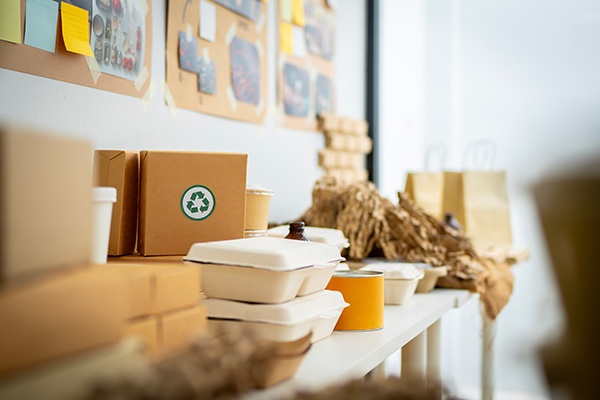
Enactus Canada: One alum turned potato waste into edible, biodegradable packaging — now advising companies like Unilever.
Alumni On Board: The Value Of Lived Experience
Identify a problem, find a solution, and then activate it. That’s impressive. You mentioned you’ve got an alumna who is on the board. You have a few alumni on the board. What’s it like having someone go from having been a participant to growing up maybe a little bit, and then stepping onto the Enactus board?
We have an incredible board, I have to say. I’m very lucky to have the kinds of support that we get from all of our board directors. About 1/3 of our board directors are alumni, as you’ve noticed. They are all at different stages of their careers. Many of them have continued to be in entrepreneurial endeavors, and some of them are working for large corporations and running those.
For the organization, it’s important for us to have that lived experience or that historical memory that they bring to the table to remind us of what our originating values were, but also to help us think strategically about how we’ll move forward. Because they are entrepreneurs at heart, they are very open to change and trying new things in iterations. It’s a wonderful organization in that way from the board perspective.
Let me channel what I think your fellow CEOs who are tuning in to this interview are thinking, as a former CEO myself. When you talk about having 1/3 of your board with that entrepreneurial background, it’s probably greater than 1/3 when you are looking at the rest of your board. That sounds like a lot of headaches if you’re the CEO. It’s a lot of, “A shiny object over here. You know what we should do. Why are we moving so slowly? Let’s do this and act faster.” In an organization that’s connected to the post-secondary academic year, I would imagine that there is some tension when it comes to timing and speed of action.
That does happen with every organization. It certainly does with ours, too. I also have the benefit of having 2/3 of our staff as Enactus alumni. They are always in a hurry. It’s keeping everyone aligned strategically to make sure that they know the direction we’re going in and that we’re going to try things, but that there are limits on time and resources in that. I will say that the board and the staff are very willing, in our case, to move forward with things and try a few things. We just have to remember that we’re going to try 5 of the 130 good ideas, not all 130 of them at the same time.
An advice that I got from a board member earlier on in my career was that when it feels like you’re getting a whole bunch of ideas or when it feels like a fire hose kind of a moment, remind people that sequence is also a strategy. Rather than doing everything all at once, we can do things in sequence. Finding that right sequence is the art of leadership in these dynamic environments.
You’re exactly right. I agree.
Shout out to Kevin Irvine for that piece of advice, which I use on a regular basis. I’m curious. At Enactus Canada, you have this very broad mandate. You’re working all across the country as part of a global network of Enactus organizations. Is that correct?
That’s correct. There are 35 countries in the network. We all operate independently. Each is its own independent charity, but at the same time, they come together annually for the World Cup Competition. That’s one of the great advantages of our organization. The top team from Canada from our national competition gets to go on to compete in the global organization.
I was going to ask about funding. We’ll come back to funding. You said World Cup. How do you compete in social impact entrepreneurialism? How do you win? Is it like winning a yoga class?
It’s a great way of putting that. A little bit. It’s much more collaborative and encouraging, which is one of the great things. It’s an opportunity for all of the students. Regionally and nationally, we bring them together for exactly this reason. It is so they can see other teams doing projects similar to what they’re doing. The way that we measure our competitions is that the teams do what I call a mini AGM presentation, where they talk about the problem that they have identified. Some of these are going to be very different. They’re all aligned with the seventeen sustainable development goals from the United Nations, but they will be in very different areas.
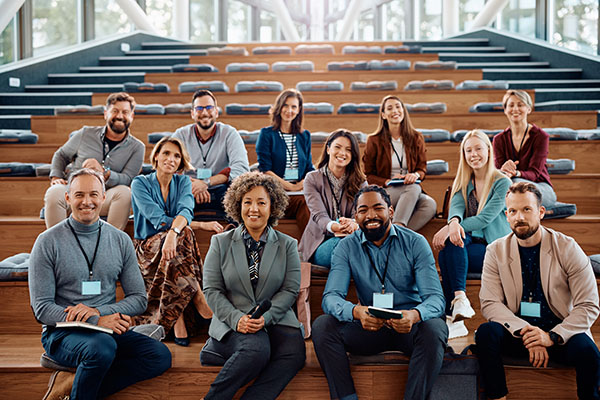
Enactus Canada: A third of our board are alumni, bringing lived experience, historical memory, and openness to change.
The way that we measure impact is that they report on what their impacts have been very specifically. They’re measured on the impact that they’ve had in the past year. There is an annual limit to that. It is a challenge for our judges to compare apples to oranges, in some cases, whether or not there are carbon offsets or methane reduction, versus the number of pounds of food waste reduced or diverted. It is based on what the actual realized impact is from that past year.
How do your candidates perform in the international competitions?
We do very well. We’ve been in the top four for the last couple of years, up until 2024. We’re incredibly competitive. In 2024, we were in the top 16. In 2014, it was the last time that Canada won the World Cup.
We’re due. Is that what you’re saying?
Yes. In fact, one of the members of that team is my Director of Partnerships at the organization. We’re lucky to have her on and be able to tell that story.
I will come back to funding. How does the funding for an Enactus work? How do you bring the dollars together to do the work?
Interestingly and unusually, I have worked at several different charitable organizations. In this case, a high percentage of our charitable donations comes from sponsorships. We are very lucky to have some very strong corporate partners, family foundations, and individuals. We are starting to engage our alumni from a giving perspective and to keep them engaged.
Our alumni are super dedicated to the organization. I hear from them regularly that this was the best thing that happened to them during their school years. Transitioning that into how we can keep them engaged and how we can create a community and network of our alumni is one of our next strategic goals to have them continue to have an impact and live the values of Enactus.
You have some of the same alumni opportunities and challenges that most post-secondary organizations have.
It is very familiar to me, both from my experience with Loran and Massey College.
From Massey College To Enactus: A CEO’s Journey
What brought you to Enactus? Why did you say, “I’m ready to be the president and CEO of this organization?”
It was somewhat coincidental. I happened to know one of the board chairs. She had asked me to come and advise on a potential new role at the organization. I helped them do that. I was very happy in my role at the time at Massey College and hadn’t thought about moving, but when the opportunity of the CEO position came up, it combined my love of working with post-secondary students, which I have always enjoyed and dedicated my life to. I have also started five businesses myself. Being able to combine those skills and experiences seemed like a natural fit.
As you came into the role, what was the biggest surprise for you?
How big in scale it was, frankly. The first thing I did when they brought me on board happened to be two weeks before the World Cup. My first competition was the World Cup. To see the level of excitement, optimism, and enthusiasm. The Canadian team all brought their instruments. They were basically an orchestra with the chanting and the jumping. It was quite energizing.
Did they win?
Not that year. They won in 2024.
I would have thought the instruments would have taken it. I don’t know.
It was quite incredible. The most surprising piece to me was how large the organization was, and the level at which the presentations and the competitions were from these students. They’re full-time students who do this off the sides of their desks. It’s quite incredible.
Talk a little bit about your learning journey as the president and CEO. You have this great background and a deep background in post-secondary. You are an entrepreneur yourself, coming into this organization. You bring them together. It’s bigger. You noticed the scale. You’re ready to take it on. Talk a little bit about your learning journey as a leader over the last number of years.
I don’t know that I knew that I was ready to take it on when I took it on. One of the things that I have always struggled with is public speaking. I knew that that was going to be a part of being the front face of the organization. In my past businesses, I was an event planner, and then I worked in administration and development at the colleges. I’ve always been on the operational side. To suddenly be in the front was an opportunity that I knew I wanted to take, but I wasn’t entirely sure I was ready for it.
I have gotten better at public speaking, but certainly, I did not master it by any stretch of the imagination. The additional challenges of human resources are always for a lot of charities. Particularly for ours, we’re not a large-scale charity. We’ve got fourteen staff in total. The turnover of staff and those sorts of challenges while managing up and down are challenging.
Leading Across Generations: HR In The Non-Profit World
When you have that figured out, your next career is writing the bestselling novel or the next bestselling book for other CEOs to solve that. It has been a frequent conversation on the show over the last couple of years around HR, particularly multiple generations in the workplace. How do you build an organization where people can come in, make a contribution for 18 months or 2 years, move on, and have everybody stronger for it? That’s the goal, but it’s challenging. How have you managed that at Enactus?
There are two things I should mention. Among our staff, of the fourteen of us, two people are a little bit older than the rest. I am more than twice the age of everyone else who works for us, with the 12 of the 14. In a lot of cases, with our staff, this is their first job out of school. I will also say that the advantage of hiring Enactus students is that they come practically fully formed as employees already.
I had an experience when I first met our director of programs. I watched him with his team. I came to him later and said, “I don’t know how you’re so good at managing people already.” He said, “I was the president of my Enactus team. We had 120 people on the team, so I was running a 120-person business.” That is a little bit of an advantage there.
You’re right. I’ve approached this with almost every role I’ve had in leadership. My job with our employees, I believe, is to give them the best opportunity to learn. I always want to know what they’re thinking about long-term so that I can help invest in that. When they are ready to move on, they have also left us in a better place and contributed well to the organization, but they are taking those skills that they wanted to develop while they were there. In a lot of cases, that has helped retain staff longer than eighteen months. If I get three years, I’ll be happy. It is a constant onboarding challenge of bringing someone new on and making sure that they understand how it goes, and then three months later, contributing to the organization.
My job with our employees is to give them the best opportunity to learn. I always want to know what they're thinking long-term so I can help invest in that. Share on XYou mentioned managing up. It sounds like you’ve got a very supportive board. Why does there seem to be this constant churn of the staff? Three years is a long service in a lot of these roles. This is a feature of our organization. It’s not a flaw. It’s how we position ourselves or mitigate some of the challenges that people leave on a regular basis and bring on new people, which is that onboarding challenge you mentioned. It is valuing the energy that comes from having new employees coming on, particularly students in their first career role.
The High-Performance Culture: Setting Stretch Goals
One of the things I have learned in the time that I’ve been with Enactus and the last few years in other organizations is making sure, too, that when we’re hiring, we’re not hiring the same person over and over again. You want someone to come in with some new ideas and a diversity of thought and experiences that can then contribute to that role in a different kind of way. It’s fun to watch that role transition a little bit into what it might be and bring new ideas.
It’s like, “That worked. That didn’t.”
There’s a lot of, “That didn’t work.”
It’s learning.
It’s always learning.
One of the other tensions that I’ve seen in our work here at The Discovery Group, working with organizations across the country, is there is what I characterize as a healthy tension between organizations wanting to provide supportive environments, to hold onto people, and to have that retention, whether it’s for 3 years, 30 years, or whatever the goal of the organization is to hold on to their teams in an effective way.
There’s also the setting that expectation of high performance. We see sometimes leaders get into the trap of, “We want to make it okay. We want you to be here so much. We’re not going to set high standards for you so that you feel comfortable and don’t feel like you’re being pushed too hard,” which causes people who want to do a lot of work and do great work to leave. You’ve said nothing that suggests you’ve got slackers on your team. It’s quite the opposite. How does that tension between that supportive environment and that challenging environment that can engage people resonate with you?
All of the people you’ve probably spoken to have had that moment where they explain what the goals are for the year to their staff, and there’s a look of, “There’s no way I’m ever going to be able to do that.” With Enactus, we set stretch goals and baseline goals.
Reasonable and stretch.
Exactly. Our stretch goals are very stretchy. They’re way out there. The young people I’m working with have ambition enough that they see that and want that. We had a review of the organization, and they came back with a report of, “This is where you landed in the grand scale of charities, the way your operations work, and whatever else. You’re at this level.” The first question out of two of the staff sitting with me was, “Who’s number one, and why?” I love that.
How do we win?
How do we get there? You’re right, though. It is part of the learning for young staff to know that goals are important and that you need to want them.
Don’t resist them. You need to want them. One of my favorite questions to ask guests when they come on here is, “How do your employees win a gold star with you?” You see someone doing something and you’re like, “That’s great work right there.”
Anticipating a need and filling that hole. They are thinking critically and have identified something. They will check in with whoever their supervisor or director is to say, “I see this. I want to fix this. Can I do that? I have the time for it,” and then go for it. It’s when we don’t have to micromanage or give them every single step, but they use their own imagination to find the solutions.
Conceive, plan, check in, and execute. Is that right?
Yes, exactly.
There was a viral Obama quote that was going around where his advice to new graduates was, “Find a way to get things done. Be useful. Just do stuff.” What resonated with many of us who have been in the social profit sector for a long time is that that is such a hallmark of the work of our entire sector and particular organizations. We’ve identified through the purpose of our organizations an opportunity, a challenge, or a social issue that needs resolution or advancement. Our job is to get stuff done in pursuit of that purpose. It’s good to hear that that’s what you’re promoting and celebrating at Enactus.
Thank you. It’s what we try to do both within our team but also for all of the teams we work with. Our mandate is to encourage them to take action.
Navigating Challenges: Post-Secondary Landscape And Funding
In the environment in which your organization is operating, the post-secondary environment is becoming increasingly challenged with funding students, having to do many more things to juggle the costs and support themselves as they go through their education. Are you seeing those effects or those impacts in the work that Enactus is doing on campuses across Canada?
Absolutely, with the cutbacks, the cap on the international students, and the reduction in revenues for the schools. We had ambitious schools at the beginning of the year. Our year starts on June 1st for growth. We saw seven teams leave the Enactus network, unfortunately, because of cutbacks in their faculty. There was even one team, two weeks before the regional competitions, that had this great project that they had been working on. All four of their faculty members had been laid off, and the team shut down.
We tried to support the team through that primarily psychologically. That’s tough for the students to see. It’s fearful for them when they see some campuses closing some of their faculties or merging and moving students to different schools, or the thought that they might have to move. That was a real struggle for our students and our faculty.
In terms of funding, not all Enactus teams received funding from their schools, but those who did in 2024 were all cut back. We heard from all the faculty advisors that the funding, even the small funding they were receiving, had been stopped. They needed to do their own fundraising in order to be able to participate in the competitions.
Our program is free to the students. The competitions are free. There are no registration fees or anything like that, but to get to them and keep the team going. We’ve been trying to do some work and have had some success around asking funders to support project accelerators, which will give teams an opportunity for a little bit of seed funding for their projects as they start from the very beginning. We have had some success with that. Hopefully, that’ll help a little bit. It was a very hard year for the post-secondary landscape entirely.
That accelerator program sounds like a great response to the issue you identified. You’re hearing from the different campuses. It’s a pretty significant departure in your business model in terms of the conversations you’ve been having with donors and the conversations you’re having around the board table. How did you approach that, saying, “I’m normally here asking you to support Enactus as an entity and the platform we provide. Now, I’m here to ask you to support the platform and help us build the ladder so more people can get onto the platform.”
I described it exactly the way you described it.
One fundraiser to another.
We want to make sure that teams feel that they’re being supported. They’re not looking for free money, but they are looking for investment. They’re not at a place yet where they’re looking at real VC investment, but they are looking at, “We have this idea. We need $1,500 to take this and start something.” We received great responses from our donors around that and brought on some new partners because of that. Similar to the potato project that we were talking about earlier, it gave them an opportunity to say, “We’d like you to think about solving this kind of problem,” and encourage the students to then think about that around their projects.
What makes a student or a student group particularly successful in the Enactus program?
It depends on what you mean by success. The overall goal is to have a positive impact on a community and/or the world. From the team’s perspective and the student’s perspective, it’s when they can get a team together and they’re all driving towards the same goal of solving this problem. I personally think it’s a great success for them when they have failed somehow and have figured out how to transition, pivot, and do all of those things. That becomes part of the story, which they would agree with me afterwards, of their success. The real success is the impact that they’re having on the community. We talk about having an impact on students and through students, but it’s the students who are the ones who are out there doing the good work.
The real success is when students work together to solve problems and create community impact. Share on XYou’ve talked about the folks that you get to have on your team, the new energy for a lot of folks in their first job, and the energy of people with the idea to change the world for the better. You’re helping them to do that and providing that platform for them. Looking back over your time as president and CEO, is there anything that you are particularly proud of that you’ve done as the leader of the organization?
I don’t know that there’s anything that I personally have done to make the organization more successful. I would like to think it is my ability to bring the staff together, because they’re the ones who are supporting the teams and the faculty advisors. We are working more collaboratively so that partnerships understand how it integrates with programs and programs understand how it feeds partnerships, and the marketing communications team is the glue that’s holding it all together. We communicate probably better now than we might have when I arrived.
The Road Ahead: World Cup And Impactful Projects
There you go. I was going to push you to say something specific, and you did at the end. You took a while to say it’s not you, but then you were like, “I’m bringing people together in communicating the purpose of the organization a little more clearly.” That’s very good. What are you looking forward to?
Many things. I am past my year and a half at the organization. I feel like we’ve got a strong strategy, and we’re on a good path for that. I feel like we’ve laid the groundwork that we need to in order to accelerate the organization, and I can see that happening. I’m looking forward to that. Short-term, I’m looking forward to the World Cup in Bangkok this 2025, which is from September 26th to 28th, seeing how Team Canada does, and seeing what all of the other teams around the world are doing to make the world a better place.
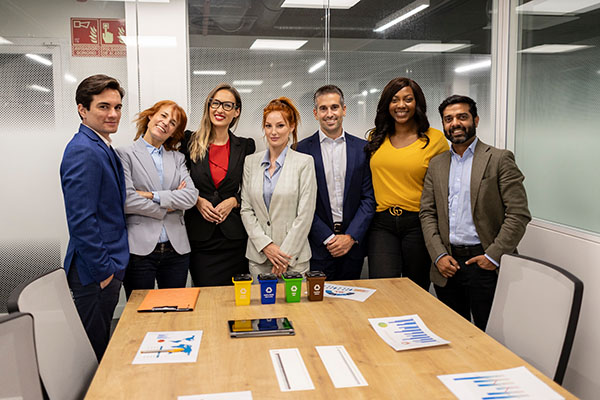
Enactus Canada: We’ve laid the groundwork to accelerate the organization — and I can see it happening.
I think this is our year, for sure. I think we got it in the bag. I don’t know any of the details.
St. Mary’s University is Team Canada this 2025. They have two great projects.
Give us a taste. What are the two projects they’ll be taking?
They have one project that they’ve been running for many years. It’s only been measured for the past year. It takes cosmetically imperfect fruits and vegetables from farmers in the Indianapolis Valley through Nova Scotia. They create entrepreneurs who are interested in reselling the product in areas that have food scarcity. They’re in their eleventh year. They redirected their 1 million pound of food.
It’s good for the farmers because of the additional income. It’s great for local community members who are learning entrepreneurship from these students, and also for the communities that are benefiting from affordable fruits and vegetables. Their second project, Alaagi, uses algae to create a biodegradable plastic that will be a sealant, like a Saran Wrap that you see. It’s directed towards packaging meat and vegetable products in supermarkets.
That is very cool. Everybody can agree that the gold medal is in the bag.
We’re winning. It’ll be very exciting.
Get everybody to bring their instruments. We’ll put it all together. It’s going to be great. As we come to the end of our conversation, if somebody is interested in learning more about Enactus, either in their community or across Canada, where can they find out more? Tell us the details.
Enactus.ca is our website. We’ve relaunched a new one, so it’s looking great. On campuses, if students are interested in starting a team that doesn’t have one, they can contact our national office at that website, or students should look on their campuses at colleges and universities to find out where their next team is and join up.
That’s great. Thank you so much for being on the show.
Thanks so much. It’s been wonderful talking to you.

